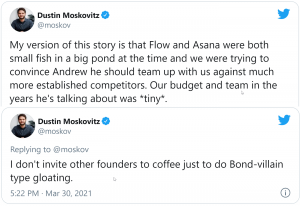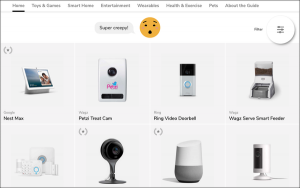When it comes to social influence, governments and other public agencies have a lot to learn from brand marketers. Contributor Scott Wilkinson discusses how agencies can adapt to this new economy to win public support.

Over the last decade, we have watched social media upend institutions and topple governments, create and destroy prominent figures, disrupt entrenched industries and upend electoral politics. Above all, social media has fundamentally altered the art and science of public opinion, ushering in an entirely new economy of influence.
In this new economy, influence happens at the most local level. The influencers aren’t celebrities or news organizations, but active members of a home association, a neighborhood watch organizer or a vocal PTA parent. Their power is easy to overlook if you are not using the right tools to listen, or if you’re looking from too high a level.
However, knowing who these people are, what they’re saying and where their information is coming from is chief currency, and online social networks are the places to cash in.
Large brand marketers have already adapted to this reality, but governments and other public agencies lag behind. To a brand, mastering this new economy of influence means driving greater awareness and selling more products; for the government agency, it could swing an election, a critical bond measure or a school’s funding. Understanding the new dynamics of public opinion comes with very high stakes.
Learning from brand marketers
From a marketing perspective, you’re significantly more likely to get a person’s attention if the information is coming from people from whom they want to hear it.
A 2016 Pew Research Center survey found 62 percent of Americans get their news from social media. The average American trusts local news organizations and information from family, friends and acquaintances more than anything coming from national news outlets. With this in mind, it’s clear why brand marketing has pivoted away from the latter and toward strategies focused on social network targeting.
In fact, the consumer product base has been utilizing this approach for quite some time. To see this strategy in action, look no farther than your laundry room. Clorox, realizing its 100-year-old brand needed a revamp, partnered with PR firm Ketchum to tap into new consumer segments.
Through social listening, Clorox identified a need around what they called “everyday extreme moments” — specifically, the types of messes encountered by young parents.
With the help of some social media ad targeting, Clorox successfully demonstrated to young parents their ability to “clean up” after those moments. Clorox and Ketchum told PR Daily they “also reached out to 11 digital influencers whom its audience trusts to spread messages about Clorox to their online fans through blog posts, Twitter/Facebook contests, viral videos, and more.”
Going a step further to connect the online with the offline, Clorox teamed up with influential online mommy bloggers, including celebrity Real Housewife Bethenny Frankel. The online results are impressive: 83 million media impressions (13 million on social media), 38 percent increase in Clorox online conversation, and a 131 percent increase in “Clorox Bleach” and “mess” correlations.
Clorox now owns more than 70 percent of mess-related conversation online, PR Daily reported, a staggering figure. Offline, the “extreme moments” campaign drove up sales among Generation X and Y consumers, providing a blueprint for successfully turning a profit in this new influence economic paradigm.
Where does this leave public agencies?
Well, on the one hand, these organizations are not working with the marketing budgets of their consumer product counterparts, making it difficult to reproduce the scale of these campaigns. On the other, does your local transportation commission actually need national influencers?
These types of influencers count followers from every part of the country and beyond, whereas public agencies (transit in particular) have very specific geographic interests and tend not to be concerned with much outside of their service area. That, however, does not mean these agencies cannot find success in employing some of the same strategic outreach.
In fact, as internet browsers crack down on more traditional cookie-based advertising, social media has increasingly become the main avenue for targeted outreach. In this environment, it takes only a few motivated individuals to turn the tide of public opinion. The question then becomes how we determine who to target for outreach.
On a hyper-local level, people really care about schools and tend to be engaged quite actively on the subject. Typical influencer metrics do not have the ability to look at these micro affinity or community groups, but on these issues, they are the decision-makers.
So, who, for example, is the Bethenny Frankel for K-12 schools in Des Moines? Is it a local education activist? A noise-making teachers’ union? Maybe it’s just one particularly disgruntled parent.
In any case, the answer lies in mapping users’ social networks in a way that highlights their affinity groups, or the identity- or issue-based communities individuals align themselves with, and where the information in these groups is coming from.
Recent surveys indicate that the original source of information and the “vehicle” for that information into a user’s network are both important. In this era of fake news, 82 percent of Americans rank the “news source” as an important factor in determining the trustworthiness of news seen on Facebook, while another 63 percent also list the identity of who shared it in their network as an important indicator of trustworthiness.
People’s sources of information are predictable: 76 percent say they usually turn to the same news sources. Public organizations are often stretched thin, so any consistency in strategy is ideal.
As social media continues to democratize politics and policy discussion, the balance of power in public debates has moved away from establishment players to your grandmother’s Facebook. Whether it be a ballot measure, fare restructuring or a capital construction project, the ability of public agencies to reframe conversations grows each day.
A relatively small effort in understanding the online landscape around your organization can yield outsized returns if it centers on those making and breaking public support.
Consumer brands have transformed social networks into virtual marketplaces, an entirely new economy where influence is money. Where they have successfully sold consumers on their products, it’s time for public agencies to sell voters on investments in their larger community.
Some opinions expressed in this article may be those of a guest author and not necessarily Marketing Land. Staff authors are listed here.
Marketing Land – Internet Marketing News, Strategies & Tips
(111)








